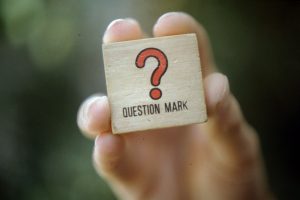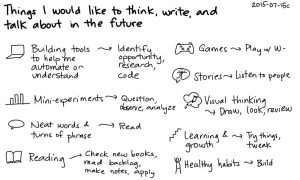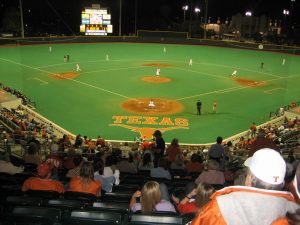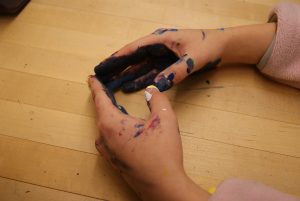
The hands represent my students, the paint the messiness of learning and the heart represents my passion for teaching.
(What?) My teaching story:
In my first year of teaching I was essentially given a position within the first week of school and handed a classroom with no decorations, no real experience other than my practicum and volunteer work and really no direction of where to go. All of a sudden all the learning I had acquired slipped away and all that was left was me and twenty three children that I was responsible for. The feeling of being overwhelmed and unprepared crept into my head. Then I was approached by Kim Cline whose position within the district was to instruct on literacy and math skills. She stepped into my classroom, saw the sheer look of panic in my eyes and guided me towards learning practices I had never knew existed. She taught me about interviews and formal assessments, about what learning truly looks like and how to encourage collaboration. She was my savoir, mentor and inspiration. I thought to myself, I want to be that person for someone one day. Thus, I decided to start my masters journey.
So What?
When I started the course on research methods, I honestly wondered why it was important? However, in having taken the course I now realize that I have been ignorant towards the importance of research within education. I always wondered where people got these amazing ideas from? It was from research. Educators take the time to seek best practices that provide evidence of it’s effectiveness. It also allows for educators to see both the strengths and struggles of different ways of learning. Research is not just searching Pinterest for hours on end. Instead, it is a necessity to understand why and how something is or is not effective. My perspective on research has drastically changed for the better.
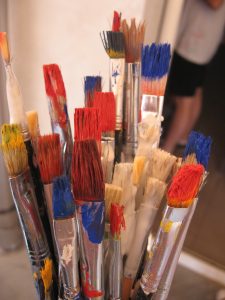
These paint brushes illustrate my willingness to try a variety of things as an educator in order to narrow down my passion into a singular focus.
In going through the course I found that there are some research methods I struggle understanding the application within the classroom. However, I have learned that the research techniques that best align with my practice are the ones that I use in my everyday practice. Although, I was unaware that I was using research methods. There are research methods that had me highlighting what seemed like almost every line. I hung off the words of Mary McAteer in the chapter Action Research in Education in her book Getting to Grips with Perspectives and Models, 2013, where she highlights that reflection is not a mundane activity that educators do but instead is something that should be acted upon. When I now think of research I think of what Adrienne Gear once said during a presentation, that learners need to understand the importance of what we are teaching by asking the what, so what and the now what? The now what refers to the direction and action we take after we have learned something. This directly correlates for me to action research. I as the reader and researcher, I read for comprehension, then making it meaningful to me and finally produce something from it.
Furthermore, in reading the article Assessing the Quality of Mixed Methods Research: Toward a Comprehensive Framework by Alicia O’Cathain, 2010, I have begun to understand the difference between the qualitative and the quantitative research methods and what each one offers. In learning this I realized that my teaching pedagogy aligns more with the qualitative research as it lends itself more to the relationship between educator and student as opposed to the statistic numerical data of what a student can produce. Yet, in being critical of both my practice and qualitative methods I recognize that there are parts of quantitative methods can allow me to track trends within my classroom that can inform what and how I teach.
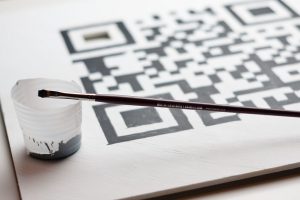
The paint brush represents my willingness to learn and the QR code is the implementation of technology.
Also, when considering what parts of my practice can be improved, I always wondered how technology could be better integrated. I was concerned that the majority of my course might revolve around high school students when exploring social media that would exclude purpose to elementary students. I couldn’t imagine using social media within my classroom because it would be a logistical nightmare that I would have no idea how to navigate. Nor could I see past how technology could be used beyond the simple Google research. Once again, I was wrong, which I am thankful for.
Although technology may be utilized differently within an elementary space, it can offer a way to share learning. In my classroom I have traditionally used apps for math games or coding but I also use an app called Seesaw which allows me to post photos and videos of students and their work to their parents directly. I recognize now that social media is not just isolated to apps such as Facebook and Instagram, but that it broadens towards apps where educators have more control of what is being posted and who is seeing it. I am not yet willing to explore platforms such as Twitter with my students simply because I do not yet know enough about it. I also believe that Twitter is a platform where less control is given to the user. As an educator I see the positive community that can be built but I am unconvinced that it has a place in my classroom right now.
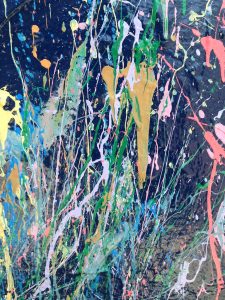
The paint splatter represents the messiness of learning but the exciting outcome that can arise.
Within this course the most important thing that I have learned is that it is the educators responsibility to know how technology informs their students. It is not simply about using technology but using it as a vehicle to provide purposeful learning within a classroom environment. I also have recognized that technology can bridge communities together when there is a perceived geographical divide. Through this I feel encouraged to explore the opportunities to connect my students with educators, students and professionals both near by and far away. It can provide a new and engaging tool to display students learning of content. I no longer fear what I do not know when using the internet but have developed critical skills to know how to effectively and appropriately use it as an educator. Although, I am not blind to the understanding that these skills will need continued exploration and learning.
Now what?

These footprints represent the path I will take on this learning journey and the positive impact I hope to make.
Through all this revelation I have come to the conclusion that when I am passionate about something it is obvious because I generally do not stop talking about it. I have continually circled around the idea of project-based learning and inquiry. I want to know what are the strengths and struggles that educators have with concepts such as Genius hour? When it is being implemented what are the necessary steps and expected failures that can occur? I want to research a variety of perspectives and learn how to properly assess students through the qualitative research method. In addition, when using Genius hour or a similar concept, I want to learn about how to teach in a cross-curricular model. How can I navigate various subjects? Can I use an overarching theme in order to guide the years instruction and then go deep with that idea? Or is that me taking the drivers seat again? I want to explore the idea of breaking down the traditional walls of teaching and capturing inspiration without concern for timelines. Moving forward I want to research and learn how to effectively implement these concepts into my classroom. I want to explore how to teach with an overarching theme over an entire year and dig deep with the concept and to find research that supports or negates that as best practice. I seek to know what an effective Genius hour is comprised of and what research methods I can find to provide evidence towards its use. I also want to learn how I can use technology to display and further students understanding in these areas. While investigating these ideas I hope to be able to better teach various concepts even if I do not have all the knowledge. I want to struggle through these messy concepts and make it meaningful for myself to be the best teacher I can be.
Photo Citations:
Photo 1: “the love for paint” by Jamie Buscemi’s pics is licensed under CC BY 2.0
Photo 2: “Brushes” by Simoubuntu is licensed under CC BY-SA 2.0
Photo 3: “_MG_0946” by Denis Vahrushev is licensed under CC BY 2.0
Photo 4: “splattered paint on a post box” by anitakhart is licensed under CC BY-SA 2.0
Photo 5: “Brevard Zoo. Viera FL” by Rusty Clark ~ 100K Photos is licensed under CC BY 2.0








